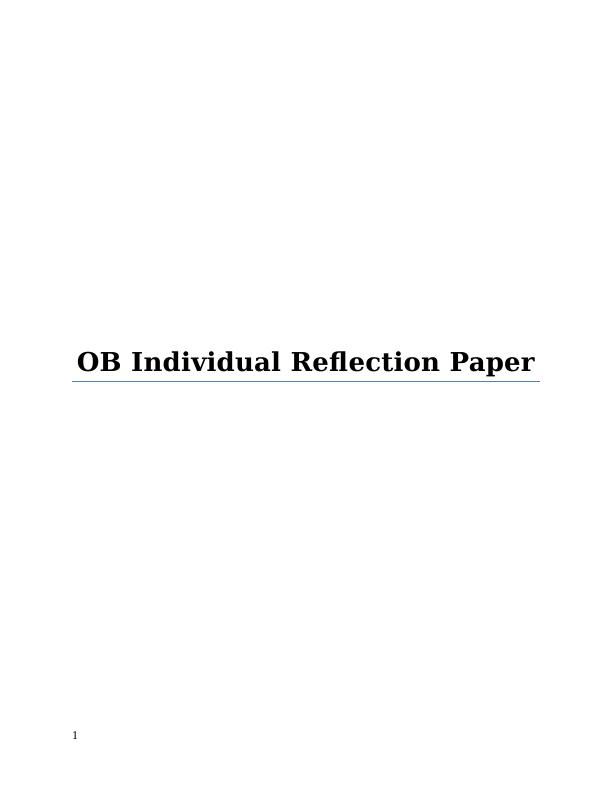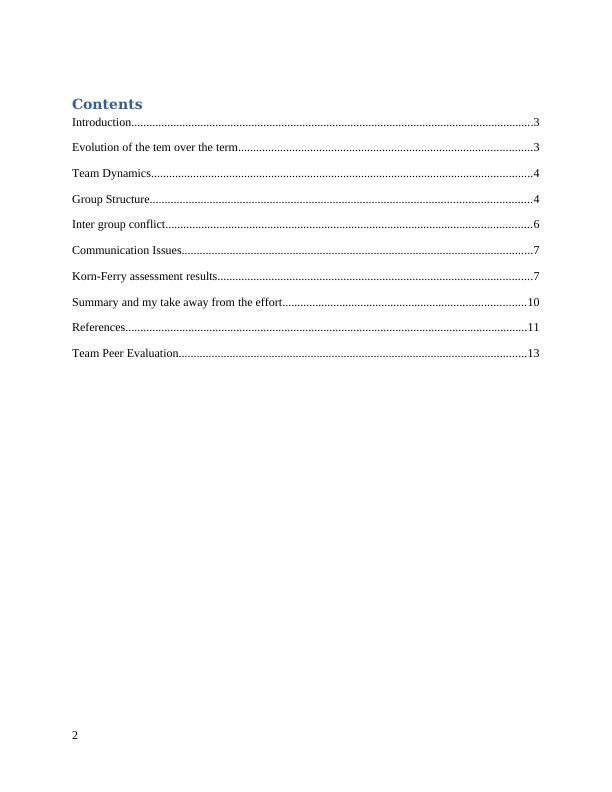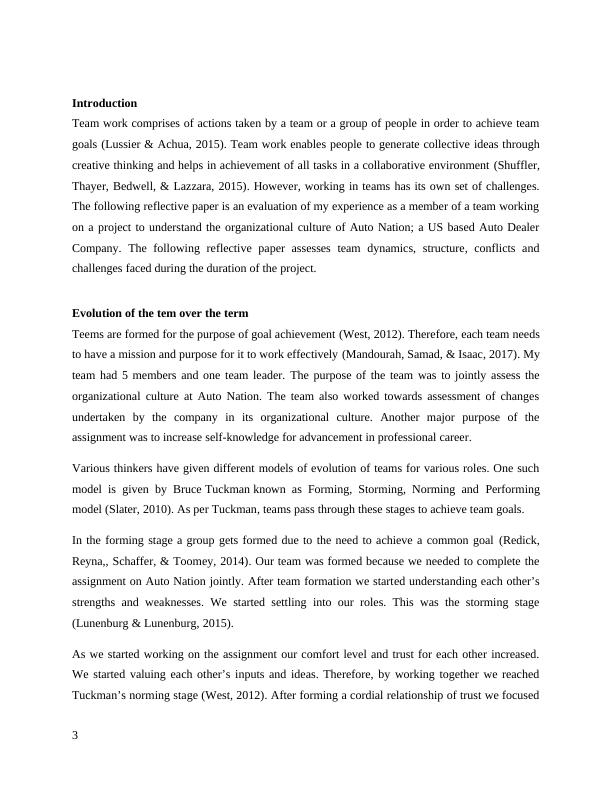Ask a question from expert
Teamwork enables people to achieve team goals
15 Pages3601 Words473 Views
Added on 2020-04-21
About This Document
OB Individual Reflection Paper Contents Introduction 3 Evolution of the tem over the term 3 Team Dynamics 4 Group Structure 4 Inter group conflict 6 Communication Issues 7 Korn-Ferry assessment results 7 Summary and my take away from the effort 10 References 11 Team Peer Evaluation 13 Introduction Team work comprises of actions taken by a team or a group of people in order to achieve team goals (Lussier & Achua, 2015). The following reflective paper is an evaluation of my experience as a member of a team working on
Teamwork enables people to achieve team goals
Added on 2020-04-21
BookmarkShareRelated Documents
End of preview
Want to access all the pages? Upload your documents or become a member.
Self Reflective of Teamwork Experience
|5
|962
|217
Reflection based on Tuckman Theory
|5
|846
|1
Transforming personal skills assignment
|11
|2682
|194
Team Management Assignment Solution
|9
|2402
|28
Tuckman's Group Development Model | Assignment
|16
|4640
|154
Reflective Essay - Working in Groups
|10
|2519
|290



